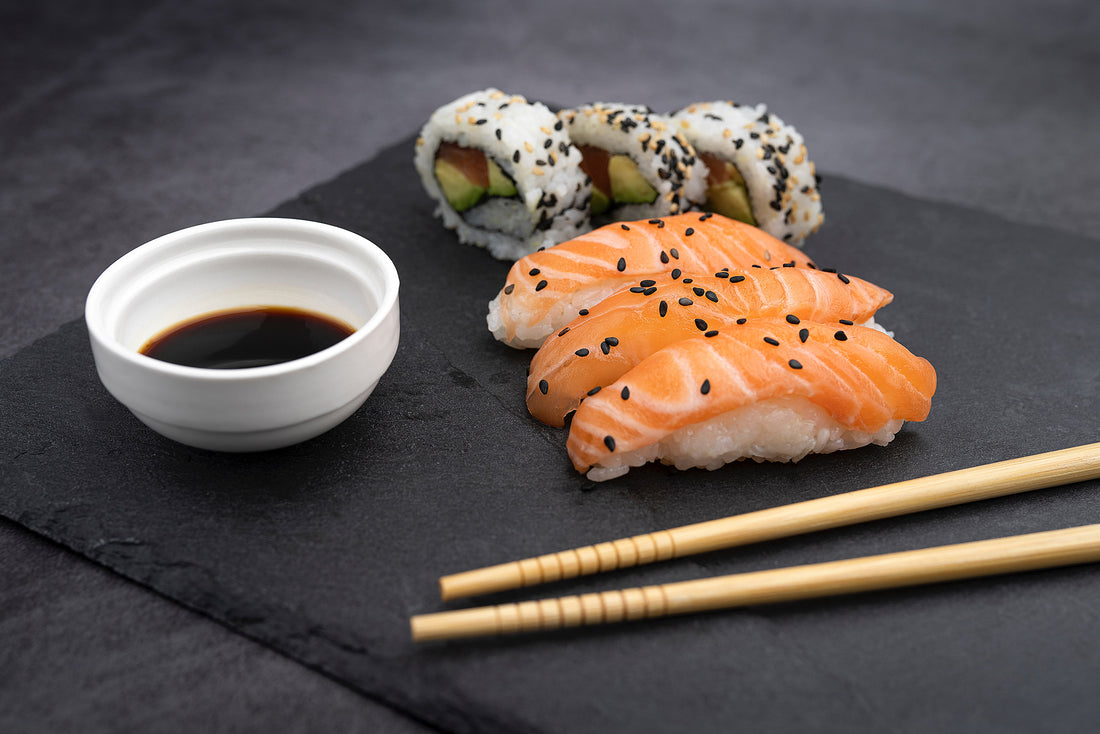Sushi is a favorite dish well known around the world. Today you can find a wide variety of sushi from different kinds of fish to vegetarian, simple or extravagant. While most people today know that sushi typically means fresh raw fish, most are unaware that the combination of fish and rice began as a means of preservation. Prior to the invention of refrigeration people would put raw fish with fermented rice in order to preserve the fish in salt.
There is some folklore about the exact origins of sushi. One of the earliest stories is an old wives tale involving an elder woman who would hide her pots of rice in a nearby Osprey nest in order to save them from being stolen. The story states that over time she noticed the rice had begun to ferment. She also found that fish scraps from the Osprey’s meals had mixed in with the rice; she found the combination to be delicious. While this may not be entirely true we do know that sushi has been around for a very long time. The earliest written recording of fish and rice being eaten together is in a 4th century Chinese dictionary that mentions salted fish with cooked rice for fermentation.
According to other sources sushi originated somewhere from the 3rd to 5th centuries in China. The first form of sushi was called Narezushi and is still sometimes found in Southeast Asia today. Narezushi is said to have appeared in Japan around the 8th century. As previously stated this form of sushi was a way to preserve fish, and each region had their own unique process. Generally speaking rice and fish were pickled together and then mixed with rice vinegar and sake. They were laid together under a stone to prevent decay; then they were left to ferment. This was known as funa-zushi which was the earliest form of narezushi. The process was immensely time consuming and only available to the upper classes. Originally the rice was only there as a means to encourage fermentation, not to be eaten. When the fish was fully fermented the rice was actually thrown out. The earliest reference to narezushi is in the Yōrō Code (養老律令, Yōrō-ritsuryō), a legal code compiled in 718 during the reign of the Empress Genshō.

In the 15th century cooks found that adding more weight to the rice and fish sped up fermentation time. Additionally, it was discovered that the fish did not need to reach full fermentation in order to taste good. This form of sushi was called mama-narezushi or raw nare-zushi. In 1660 the capital of Japan was changed from Kyoto to Edo (present day Tokyo). During this time Edo grew in population and its economy soared. At this time sushi makers began using a method from the 1700s where they put a layer of cooked rice seasoned with rice vinegar alongside a layer of fish. These layers were then compressed in a small wooden box for approximately two hours then sliced for eating.
In the 1820s the traditional sushi we all know and love came into play. Hanaya Yohei is credited as the creator of modern nigiri sushi. He opened a sushi stall in the Ryogoku district of Edo which was along the banks of the Sumida river. His method involved adding rice vinegar and salt to freshly cooked rice and then letting it sit. He, then, served sushi in a hand pressed fashion, topping a small ball of rice with a thin slice of fish fresh from the bay. This method allowed the sushi to be ready in a matter of minutes and quickly became extremely popular.
Over the years more sushi stalls popped up throughout Edo and the meals’ popularity soared all throughout the country. By the early 1900s restaurants opened and it became more traditional for sushi to be eaten inside. During the 1970s the sushi industry saw another boom after the advancements in refrigeration allowed fish to stay fresh for longer periods of time. The post war economy was booming which led to a huge demand for high end sushi and led to a major boom in the market. Today sushi continues to be a highly sought after dish and is eaten all across the world.


